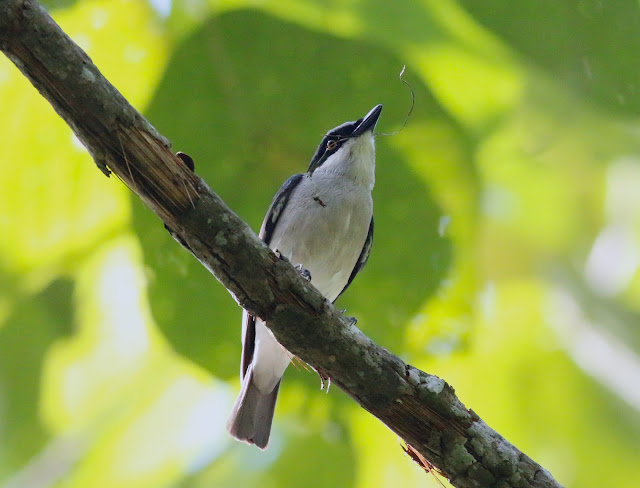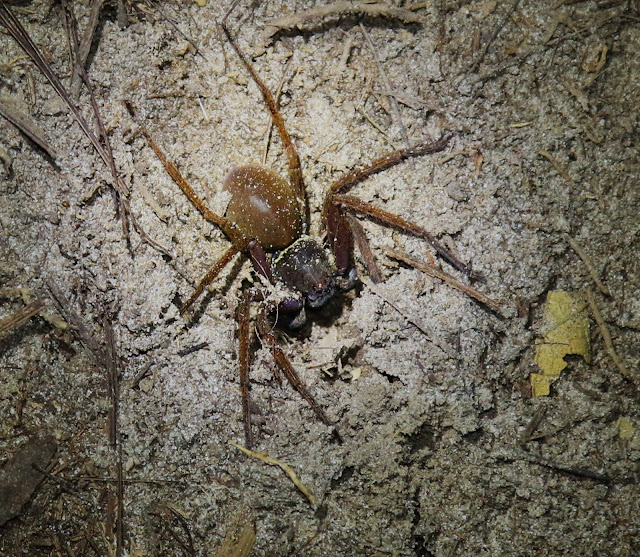Sometimes you can be lucky when all birds congregate on a certain location or tree. Should that happened then you can just unfold your portable "fishing" chair and sit there to enjoy the birds. I was lucky recently to experienced such a joyful occasion.
This is a male Raffles Malkoha with a prey (presumably a cricket)
While the male was searching for food in the thickets, the female Raffles Malkoha (above) was up on the tree searching for her favourite meal.
When compared to other malkoha in this region, this malkoha is the smallest of them all.
Lesser Cuckooshrike (female)
Large Woodshrike
Ah ! this is where it probably got its nesting materials.
You can occasionally see this bird in the jungle.
Striped-throated Bulbul
In the jungle and in this region, the most common bulbuls are those Red-eyed Bulbuls followed by this one.
All bee eaters are beautiful.
Blue-throated bee eater
Flies and bees are their favorite food.
This one looks even 'younger'. It's most likely a juvenile which have yet to assume full colaration.
This one is quite confiding as it allowed close approach.
They would make some calls as they probed into the tree trunks.
Pecking nearby is the female Orange-backed Woodpecker
She would constantly look for her mate whereabout and follow him as they pecked from one tree to another.
Also pecking nearby was this male Banded Woodpecker.
Looks like it has a shorter bill as compared to the above Orange-backed woodpeckers.
After the above two woodpecker species have left, then came this slightly larger woodpecker
This one was silent throughout.
This is a female Common Flameback Woodpecker.
Ironically all the above woodpeckers did not display any territorial behavior when they are around the vicinity although they did kept a distance away from each other.
As I was photographing the above birds then I saw something large flying above me.
It's a Rufous-bellied Eagle
Looks like it is carrying something under its belly.
This is one of those uncommon resident raptor.
As I walked just a few meters away I came across this "cartoon" bird as some birders described this species.
This is a male Black-and-Yellow Broadbill
After taken a few more shots I bid them adieus.
All the above birds' photos were taken from just one local patch in one fine morning. What a wonderful morning it was . Next are some more birds taken from other regions - the northern region of Kedah.
Mr Dollar Bird
Quite a large bird actually
This is an Oriental Honey Buzzard (male). Most likely on migration.
Blue-tailed Bee Eater with what else - a bee !
Its deep and rich colour probably denote a male which is in breeding mood.
Little Cormorant.
This time I saw two of them and they were circling around the mangroves - searching for suitable nesting site perhaps?
Common Iora
A common countryside and garden bird.
THAT'S ALL FOLKS ! SEE YOU NEXT TIME AGAIN.































































